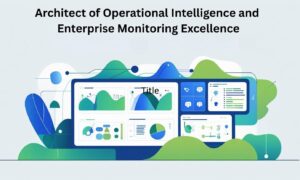If you’re part of a data or an IT team at any organization, you’re probably familiar with machine learning. These days, machine learning impacts various verticals, such as telecommunications, financial services, retail, healthcare, manufacturing, and education.
In such sectors, machine learning drives faster and wiser decisions in business-critical applications, from sales and marketing to finance, IT, executive management, and production.
The possibilities are endless, which is why many organizations dedicate a team just for machine learning operations. In fact, some businesses are investing in several platforms for machine learning operations to take advantage of its excellent benefits.
An Overview Of Machine Learning Operations (MLOps)
MLOps is actually defined as a practice for communication and collaboration between operations professionals and data scientists to help manage production deep learning or machine learning lifecycle.
Like DataOps or DevOps, MLOps looks to boost machine learning production quality and increase automation while focusing on regulatory and business requirements. In other words, MLOps is all the engineering pieces, which come together and frequently help to run, train, and deploy AI models.
Components Of MLOps
There are three components of MLOps, and these include data engineering, machine learning, and DevOps. Every component contributes to critical elements that work to close the lifecycle loop of machine learning within an organization.
MLOps started as simple processes and workflows to deploy during the implementations to deal with the difficulties faced with machine learning.
At present, MLOps is considered as one of the fastest-growing projects. The advantages of reliable maintenance and deployments of machine learning systems in production are huge.
MLOps are no longer just simple processes and workflows because they’re not full-on systemization and benchmarks. For this reason, data and IT teams in all types of industries try to figure out the ways to implement MLOps better.
How MLOps Works?
MLOps follows a pattern similar to DevOps. The practices that drive a smooth integration between your overall operations process and development cycle can also transform how your organization manages big data. Like DevOps shortens the production life cycle by creating better products with iteration, MLOps drives insights you could trust and put them into play quickly.

Why Should Organizations Adopt MLOps?
With the rise of MLOps, you may wonder if it’s a wise investment or not. Well, what makes it a great choice for your organization is that it enables data scientists the freedom to do what they do best and look for answers. So, take all the business decisions off their plates for them to deploy and build machine learning models that will get your insights quickly.
Remember that you didn’t hire data professionals to understand the outs or ins of your industry. You also didn’t hire them to keep up with the regulations. So, remove those barriers and let them find your answers.
MLOps and its practices drive a seamless integration between your overall operations process and development cycle, which can transform how your business handles big data. If you don’t want to miss this benefit, it’s time to consider MLOps.
Benefits Of MLOps
Once you adopt MLOps practices, it’ll provide you faster time-to-market for machine learning projects by delivering several benefits such as the following:
Model And Data Quality – MLOps allow you to enforce policies, which guard against model bias and track the changes to statistical data properties as well as model quality in the long run.
- Auditability – Versioning every output and input, from source data to data science experiments to trained model, means that you can show exactly how the model was created and where it was implemented.
- Reliability – Incorporating MLOps enables you the ability not just to deploy quickly but with increased consistency and quality.
- Repeatability – Automating every process helps you ensure a repeatable process, including how the machine learning model is deployed, evaluated, training, and versioned.
- Productivity – Providing a self-service environment with access to curated data sets allow data scientists and data engineers to waste less time with invalid or missing data and move faster.
Wrapping Up
The time spent in setting up MLOps can be quite considerable. However, its benefits are sizable for any organization that’s serious about long-term maintainability and repeatable machine learning in production. As machine learning becomes more popular, new systems and platforms are made available, making it easy to set up MLOps for your business.



































